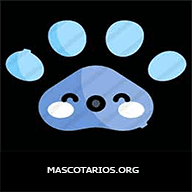Content |
|---|
History
The Griffon Bruxellois, semi-long hair variety, It is the oldest of the Belgian Griffons. It is said to descend from Smousje, a small rough-haired Brussels dog that was used to hunt rats.. Was before 1880 when the selection and improvement of this breed began in Brussels. Crosses were made between the Barbet, the Stable griffon, the Affenpinscher, el Yorkshire Terrier, the Pug and the Cavalier King Charles spaniel (ruby fur; solid red). Presented for the first time in Brussels at 1880, three years later a first standard of the Griffon Bruxellois, which was modified in 1904 to lead to the final version. A first breed club was then created in Great Britain in 1887, and then in the United States in 1945. The breed is recognized by the FCI since 1954.
Like all Grifones belgas, the Griffon Bruxellois was especially popular in the early 20th century, thanks above all to the interest shown by Queen Marie Henriette of Belgium. But, the two world wars brought the breed to the brink of extinction. It only owes its survival to the efforts of enthusiasts., especially the british. In fact, hardly any left Griffon Bruxellois in Belgium at the end of WWII.
Today, is a dog that is still relatively rare.
It is in Great Britain where Griffons are more widespread, while in the rest of Europe, the population is still very low.
The AKC registered its first Griffon Bruxellois in 1910. If not for the dedication of the American and British enthusiasts, the race might not have survived.
The Griffon Bruxellois gained millions of new fans in 1997, when a rogue Griffon Bruxellois named Jill outshone Jack Nicholson in the hit movie “As Good As It Gets“.
Physical characteristics
The Griffon Bruxellois is a small companion dog, Intelligent, balanced, alert, proud and robust, almost square in constitution, with good bone, but also elegant in his gait and complexion, drawing attention with his almost human expression.
Fur:
The Griffon Bruxellois has a hard coat with undercoat. The coat is naturally rough, slightly wavy, not curly, but yes skinny. The coat should be long enough to allow the structure to be seen. A coat that is too long damages the silhouette and is not sought after. A silky or woolly coat is a serious fault. The Petit Brabançon has a short coat. The coat is rough, closed and bright, and does not exceed 2 cm..
Color: Red, reddish; a little black is tolerated in head decoration.
In the three races (Griffon belge, Griffon Bruxellois and Petit Brabançon) some white hair is tolerated on the chest, but it is not sought.
Weight:
Of 3,5 to 6 kg.
Character and skills
The Griffon Bruxellois is balanced, alert and proud. With an assertive character and a certain ego, not necessarily suitable in the presence of very young children. In fact, will not appreciate being abused. On the other hand, it will be a very good companion for slightly older children. It also, gets along very well with other animals.
neither shy nor aggressive, the Griffon Bruxellois he is very vigilant and attached to his master. Above all, he needs to be close to his family, and is perfectly suited to apartment living. It also, have a moderate need for exercise: a daily walk is enough for him. This also makes him a suitable dog for an older person, if it is willing to provide the necessary maintenance. With more reason, by not supporting loneliness, will certainly prefer a very available master, with whom you can share games and emotions.
Last, it is a very funny and expressive animal, what will the happiness of home do. Some say that their mimicry is similar to that of a human or a monkey.
Education
In general, they seem to pick up tricks quickly and love to practice them when their attention is drawn to them. to him Griffon Bruxellois loves agility tests, in which they stand out. With his appearance of “mad king” in her fur coat, they can be fun and upbeat if given enough love. As it is a breed that tends to become more attached to a single member of the family, he will have to be accustomed to meeting as many people as possible from a young age so that he does not become excessively protective.
They are not troublemakers, but problems can arise if they become too dependent. They do not like to be alone for a long time because they immediately miss their master. Your love of the game makes it easy to bond. They love to play fetch and seem to be inexhaustible when it comes to having fun.. Once they have tired, they snuggle in your lap and take a well-deserved nap. They need a short leash walk every day, or just the chance to frolic outside, but they don't need a lot of exercise. Recovery usually works very well.
Health
Although the Griffon Bruxellois it is a generally healthy dog, with an estimated life of fourteen years, is nevertheless predisposed to certain hereditary genetic diseases such as displasia coxofemoral, the medial patella dislocation and the respiratory obstruction syndrome. It is also subject to hydrocephalus, “aberrant eyelashes” (distichiasis and trichiasis) and skin allergies.
Grooming
For your maintenance, daily brushing is necessary. It is also advisable to groom him regularly and monitor the condition of his eyes and the folds of his face.
His tough fur must be plucked, that is to say, dead hairs must be removed by hand. It is advisable to entrust this removal to a dog groomer.
Breeders of the breed "Griffon Bruxellois"
Characteristics "Griffon Bruxellois"
Coexistence is important that you have with your new friend. Before considering the acquisition of a dog of the breed "Griffon Bruxellois" you know certain factors. Not all breeds of dogs are apt to live in an apartment, you must take into account his character, their need for exercise, their interaction with other pets, their care and if you have small children, their level of tolerance towards them.
Adaptation ⓘ2.0 out of 5 stars (based on 1 review)
|
friendly dog ⓘ3.0 out of 5 stars (based on 1 review)
|
hair loss ⓘ1.0 out of 5 stars (based on 1 review)
|
|---|---|---|
Affection level ⓘ4.0 out of 5 stars (based on 1 review)
|
Need for exercise ⓘ2.0 out of 5 stars (based on 1 review)
|
Social need ⓘ2.0 out of 5 stars (based on 1 review)
|
Home ⓘ3.0 out of 5 stars (based on 1 review)
|
Toilet ⓘ2.0 out of 5 stars (based on 1 review)
|
Friendly with strangers ⓘ2.0 out of 5 stars (based on 1 review)
|
barking ⓘ3.0 out of 5 stars (based on 1 review)
|
Health ⓘ3.0 out of 5 stars (based on 1 review)
|
Territorial ⓘ4.0 out of 5 stars (based on 1 review)
|
Cat friendly ⓘ4.0 out of 5 stars (based on 1 review)
|
Intelligence ⓘ3.0 out of 5 stars (based on 1 review)
|
Versatility ⓘ3.0 out of 5 stars (based on 1 review)
|
Child friendly ⓘ1.0 out of 5 stars (based on 1 review)
|
Surveillance ⓘ3.0 out of 5 stars (based on 1 review)
|
joy ⓘ4.0 out of 5 stars (based on 1 review)
|
Images "Griffon Bruxellois"
Photos:
1 – “Griffon Bruxellois” by The original uploader was Dan9186 at English Wikipedia., CC BY-SA 3.0, via Wikimedia Commons
2 – “Griffon Bruxellois” – Riga, Baltic Winner -2013, 9-10 Nov by Thomas, CC BY-SA 3.0, via Wikimedia Commons
3 – “Griffon Bruxellois” by Canarian, CC BY-SA 4.0, via Wikimedia Commons
4 – “Griffon Bruxellois” by Galawebdesign, CC BY-SA 3.0, via Wikimedia Commons
5 – “Griffon Bruxellois” one year old by Galawebdesign, CC BY-SA 3.0, via Wikimedia Commons
6 – European Dog Champion “Griffon Bruxellois” 2010 by Ger Dekker
Videos "Griffon Bruxellois"
Type and recognitions:
- FCI CLASSIFICATION: 80
- Group 9: Companion and Toy Dogs
- Section 3: Small Belgian Dogs / Griffons. Without working trial..
Federations:
- FCI – Groupo 9 – Section 3.1 “Griffons” ⓘ
- AKC – Sporting ⓘ
FCI breed standard "Griffon Bruxellois"
Alternative names:
1. Griffon, Griff, Bruss (English).
2. Griffon bruxellois (French).
3. Griffon bruxellois (German).
4. (Portuguese).
5. Griffon bruxellois (español).
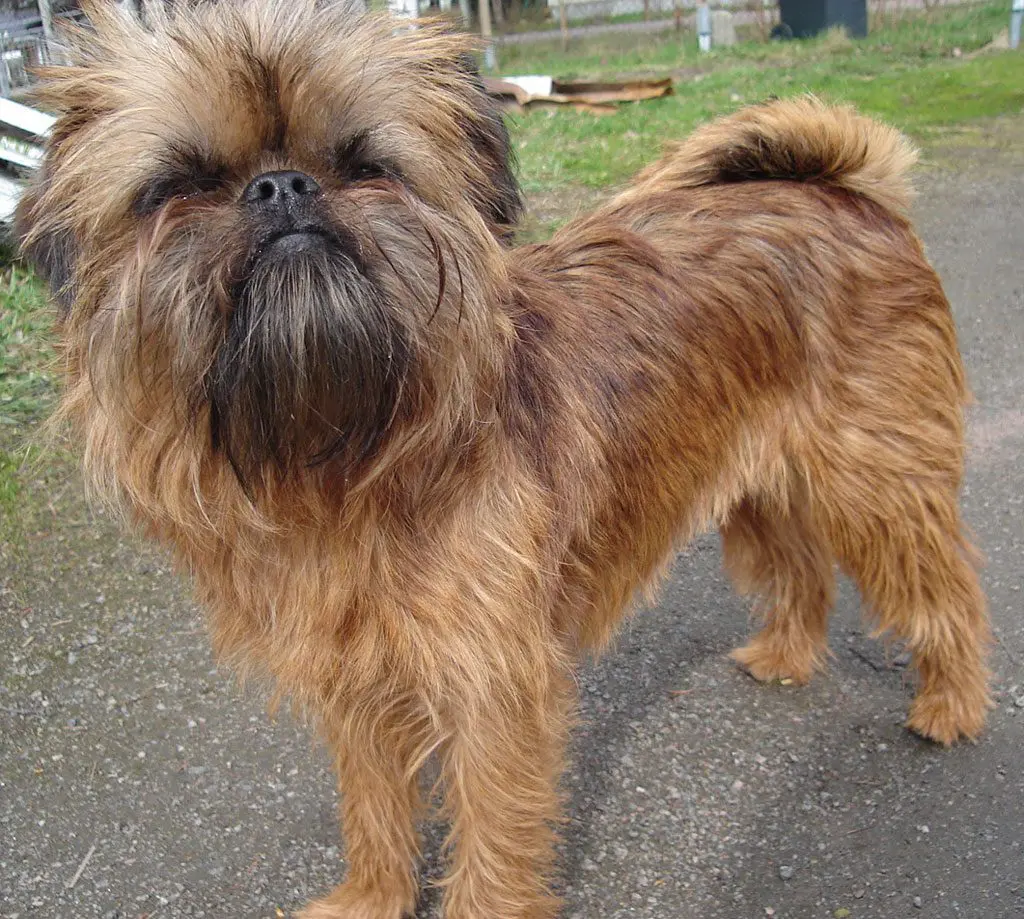
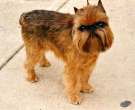
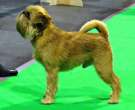
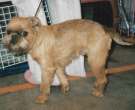
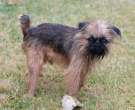
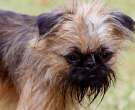
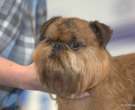
 Griffon Bruxellois Funny Viral Videos Compilation
Griffon Bruxellois Funny Viral Videos Compilation Dogs breeds, Brussels Griffon, Griffon belge, The Little Brabantine
Dogs breeds, Brussels Griffon, Griffon belge, The Little Brabantine Brussels Griffon dog breed. All breed characteristics and facts about Brussels Griffon dogs
Brussels Griffon dog breed. All breed characteristics and facts about Brussels Griffon dogs âBrigiâ, director's star Daniel Sanchez Arevalo
âBrigiâ, director's star Daniel Sanchez Arevalo